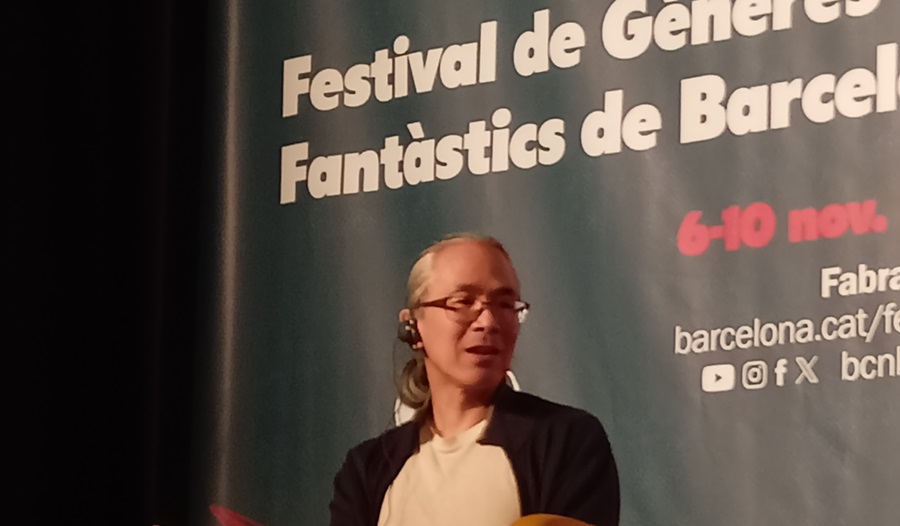- Artificial intelligenceTechnology
- 25 de April de 2025
- No Comment
- 7 minutes read
AI & Creativity?

AI & Creativity?
Why AI cannot create Art: Chiang’s arguments revisited


Science fiction writer Ted Chiang has argued why AI cannot create art (Chiang, 2024). I recommend reading his article (and of course books!). I have proposed some counterarguments (Hernández-Fernández, 2025), which, like this text, are meant to provoke thought. Chiang’s arguments against AI’s artistic capabilities can be summarized as follows (Chiang, 2024; Hernández-Fernández, 2025):
- The Microdecision Argument – Art involves numerous conscious and unconscious decisions. Chiang argues that AI relies solely on statistical models and imitation, producing predictable and mediocre results, aligning with Wagensberg’s (2017) notion that the opposite of creativity is mediocrity.
- The Lack of Intentionality Argument – True art requires intention. Since AI has no emotions, intellectual joy, or desires, it cannot create with meaningful intent.
- The Effort and Process Argument – The creative process and effort are integral to artistic value. AI generates content effortlessly, which Chiang believes diminishes artistic worth.
- The General Intelligence and Efficiency Argument – AI struggles to acquire new skills efficiently compared to humans. Despite excelling at games like Go, it requires vast datasets, whereas humans learn more intuitively—key to artistic creation.
- The Lack of Originality Argument – AI is generative but not creative. Its outputs, built on automated mechanisms, lack true originality, resulting in statistically average work.
These points lead to discussions in classrooms and faculty meetings about art (and artistic education), raising counterarguments that may contribute to future research and debate (Hernández-Fernández, 2025):
- AI and Artistic Microdecisions – While AI’s decisions are based on prior data and algorithms (with inherent biases), future advancements may allow AI to better replicate human artistic processes. This raises questions about hybrid human-AI creative interactions (microdecisions in prompting, in AI-human feedback, etc.).2.
- Intentionality and Ethical Use of AI – While AI lacks intent, educators and artists can use it expressively through techniques like prompting (Hernández-Fernández & Ferrer-i-Cancho, 2023). Recognizing the link between technology and its usage is crucial to avoiding misconceptions of AI autonomy (Diéguez, 2024). Teachers play a key role in guiding students toward responsible and intentional creativity. 3.
- Optimizing Creative Effort – AI can handle repetitive technical tasks, allowing artists to focus on conceptual and creative aspects, much like how photography revolutionized cinema. AI may democratize digital creation, enabling users to generate software without coding knowledge to produce graphic works or 3D-printed pieces (Hernández-Fernández, 2023).4.
- Sustainability and AI Efficiency in Art – While AI currently has a high environmental cost (Crawford, 2021), future sustainable developments may enable responsible integration into art education, fostering new creative processes.
- Human-Machine Collaborative Creativity – AI can extend the boundaries of collaborative artistic creation. In education, AI could serve as a creative partner rather than merely a tool, reshaping artistic expression and innovation. Instead of dehumanizing art, this interaction may enhance it, reinforcing that creativity has always been shaped by external influences—including technology.
On the other hand, the recent “Ghibli effect” phenomenon, driven by AI, demonstrates how digital virality can globalize artistic expression, but it also forces us to reflect on the ethics and legality (How are trained this AI models? Without permission?), and also environmental impact of these processes, which require vast amounts of data and energy. While we celebrate AI’s ability to generate captivating Ghibli-style images, we must ask ourselves the real cost of this accelerated creativity: are we replacing human effort and artistic soul with unsustainable energy consumption for the global circus?
Just as artists have long drawn inspiration from other humans, machines may now play a similar role. AI may not be creative in the human sense, but it is poised to become an invaluable tool in the creative process, expanding and redefining our understanding of creativity (Wingström et al., 2024) and reshaping both artistic production and education.
References:
Chiang, T. (2024). Why A.I. Isn’t Going to Make Art. New Yorker, 31th August, 2024. https://www.newyorker.com/culture/the-weekend-essay/why-ai-isnt-going-to-make-art
Crawford, K. (2021). Atlas of AI: power, politics, and the planetary costs of artificial intelligence. New Haven: Yale University Press.
Diéguez, A. (2024). Pensar la tecnología. Barcelona: Shackleton books.
Hernández-Fernández, A. (ed.) (2023). Creativitat digital. Barcelona: Iniciativa Digital Politècnica, colecció Diàlegs UPCArts. https://upcommons.upc.edu/handle/2117/395833
Hernández Fernández, A. (2025). Inteligencia Artificial y diseño. Revista Grafica, en premsa.
Hernández Fernández, A. i Ferrer Cancho, R. (2023). Lingüística quantitativa i lleis lingüístiques: de la lingüística a la intel·ligència artificial i la tecnoètica. Terminàlia, 27. https://doi.org/10.2436/20.2503.01.190
Holmes, W., Bialik, M., & Fadel, C. (2019). Artificial intelligence in education: promises and implications for teaching and learning. Center for Curriculum Redesign.
Wagensberg, J. (2017). Teoría de la creatividad. Barcelona: Tusquets.
Wingström, R., Hautala, J. y Lundman, R. (2024). Redefining creativity in the era of AI? Perspectives of computer scientists and new media artists. Creativity Research Journal, 36(2), pp. 177-193.
Source: educational EVIDENCE
Rights: Creative Commons

